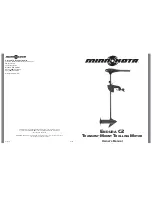
Ameba-D User Manual
User Manual All information provided in this document is subject to legal disclaimers. © REALTEK 2019. All rights reserved.
250
0000 1XX
X
High speed master code.
1111 1XX
X
Reserved
1111 0XX
X
10-bit slave addressing.
I
2
C does not restrict you from using these reserved addresses. However, if you use these reserved addresses, you may run into incompatibilities
with other I
2
C components.
13.2.4.3
Transmitting and Receiving Protocol
The master can initiate data transmission and reception to/from the bus, acting as either a master-transmitter or master-receiver. A slave
responds to requests from the master to either transmit data or receive data to/from the bus, acting as either a slave-transmitter or slave-
receiver, respectively.
13.2.4.3.1
Master-Transmitter and Slave-Receiver
All data is transmitted in byte format, with no limit on the number of bytes transferred per data transfer. After the master sends the address
and R/W bit or the master transmits a byte of data to the slave, the slave-receiver must respond with the acknowledge signal (ACK). When a
slave-receiver does not respond with an ACK pulse, the master aborts the transfer by issuing a STOP condition. The slave must leave the SDA
line high so that the master can abort the transfer.
If the master-transmitter is transmitting data as shown in Fig 9-13, then the slave-receiver responds to the master-transmitter with an
acknowledge pulse after every byte of data is received.
Master to Slave
Slave to Master
S
Slave Address
R/W
A
Data
A
Data
A/
P
7-bit Address
A
S
Slave Address
( 2-bit
address)
R/W
A
10-bit Address
Slave Address
(8-bit address)
A
Data
A/
P
A
Fig 13-7 Master-Transmitter protocol
13.2.4.3.2
Master-Receiver and Slave-Transmitter
If the master is receiving data as shown in Fig 9-14, then the master responds to the slave-transmitter with an acknowledge pulse after a byte
of data has been received, except for the last byte. This is the way the master-receiver notifies the slave-transmitter that this is the last byte.
The slave-transmitter relinquishes the SDA line after detecting the No Acknowledge (NACK) so that the master can issue a STOP condition.
When a master does not want to relinquish the bus with a STOP condition, the master can issue a RESTART condition. This is identical to a
START condition except it occurs after the ACK pulse. Operating in master mode, the I
2
C can then communicate with the same slave using a
transfer of a different direction.
The document authorized to
SZ99iot
2019-05-15 10:08:03















































